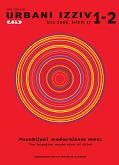The dimensions of urban public space in user’s mental image
The dimensions of urban public space in user’s mental image
Author(s): Matej NikšičSubject(s): Social Sciences
Published by: Urbanistični inštitut Republike Slovenije
Keywords: classification; experiencing space; mental perception of space; micro-space linkage; physical properties of space; programmatic properties of space; public open spaces
Summary/Abstract: The article presents a method for recognising qualitative and quantitative dimensions of open urban space in the user’s perceptual image. It stems from the hypothesis that the open urban space in mental perception isn’t a uniform continuum, which in general applies to its physical phenomenon. It discloses where and how users experience the limits of real open public space that they occupy and what they perceive as the neighbourhood of such a place. Therefore it researches rules applied by the user to mentally structure physically continuous space into smaller units and then reassemble these into a network. Knowledge of such rules enables expansion of open urban public spaces, which user’s experience as positive, into the wider area, thus revitalising those neighbouring spaces that are perceived as negative or are completely absent in the mental image and consequentially unused. The presence of people is in fact the essential component of quality public spaces.
Journal: Urbani izziv
- Issue Year: 17/2006
- Issue No: 1-2
- Page Range: 200-204
- Page Count: 5
- Language: English

